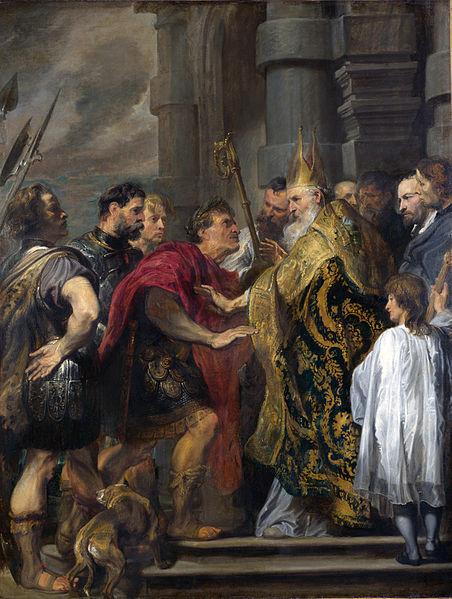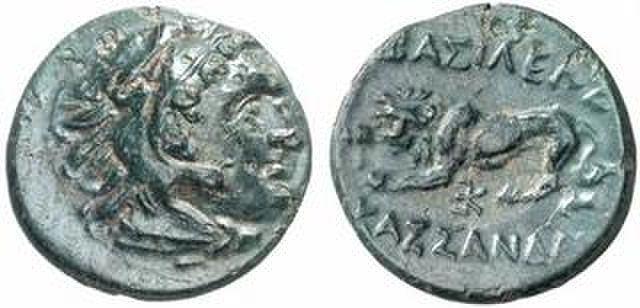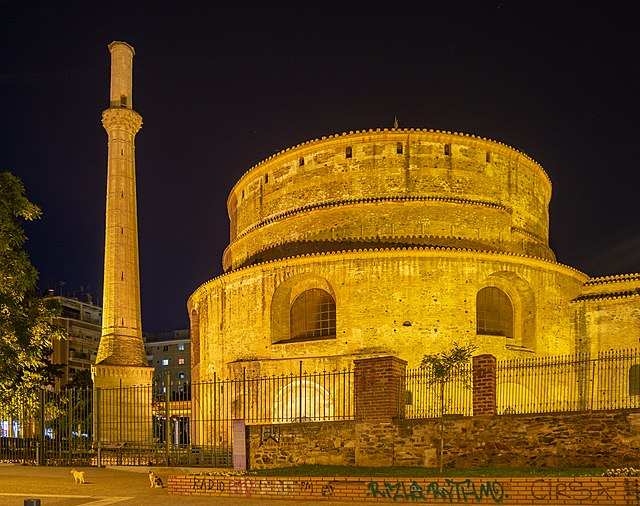The Massacre of Thessalonica in Macedonia, Greece was a massacre of local civilians by Roman troops which is believed to have occurred around 390. According to Sozomen, in June of that year Butheric, a Roman general stationed in Thessalonica as a magister militum was lynched in an urban riot by an angry mob in the circus after having a famous circus charioteer arrested for pederasty, and refusing the people's demand for his release, although, this is found in only one source. In response, Theodosius authorized his Gothic soldiers to punish the people of the city resulting in the killing of a large number of citizens when they were assembled in the city's hippodrome.
Massacre in the Hippodrome of Thessaloniki in 390, 16th-century wood engraving
The Palace of Galerius in Thessaloniki (Navarinou Square), near the Hippodromus, where the massacre allegedly took place.
Anthonis Van Dyke's 1619 painting of St. Ambrose blocking the cathedral door, refusing Theodosius' admittance. Saint Ambrose barring Theodosius from Milan Cathedral
Thessaloniki, also known as Thessalonica, Saloniki, Salonika, or Salonica, is the second-largest city in Greece, with slightly over one million inhabitants in its metropolitan area, and the capital of the geographic region of Macedonia, the administrative region of Central Macedonia and the Decentralized Administration of Macedonia and Thrace. It is also known in Greek as "η Συμπρωτεύουσα", literally "the co-capital", a reference to its historical status as the Συμβασιλεύουσα or "co-reigning" city of the Byzantine Empire alongside Constantinople.
Ancient coin depicting Cassander, son of Antipater, and founder of the city of Thessaloniki
The fourth-century AD Rotunda of Galerius, one of several Roman monuments in the city and a UNESCO World Heritage Site
Section of the Walls of Thessaloniki
Church of the Acheiropoietos (5th century) at the city's centre







